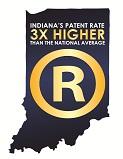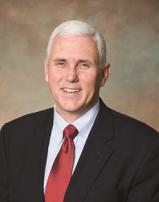
Indiana is developing a breakthrough that will change the future of life sciences. It’s a new way of encapsulating the infrastructure, tax incentives, research partnerships and distribution networks that biotech industries need to compete in the 21st Century, and delivering them in a single, concentrated dosage. With world-class universities, the nation’s top destination for logistics, a AAA credit rating and pro-business environment, Indiana is the “bio-logical” choice for life sciences.
 |
| Indiana’s life sciences industry delivers a $44 billion economic impact to the state, which is home to 825 companies and more than 50,000 life sciences workers. – BioCrossroads, 2012 |
Case in point: Indiana is the orthopedics capital of the world, which in itself is a bold statement, but also a testament to the state’s potential to not only have some of the largest medical device manufacturers such as Zimmer, DePuy and Biomet on Indiana soil, but also to maintain an attractive environment to retain operations in the state with some of these companies for more than 100 years. Obviously, top-notch products and a vision to continually innovate and develop the devices that medical professionals and their patients have come to rely on are the keys to that success story. But businesses across all sectors enjoy the competitive advantages afforded to them through Indiana’s sound fiscal policies, low tax structure and cooperation between the public and private sector.
So what is the secret formula that makes this possible? Actually, it’s no secret that from the top down, Indiana’s entire government administration has been structured to help businesses bring home more money to their organizations, their investors and their employees by keeping business costs and regulation at the lowest levels possible. Those are the basics for any industry to have a competitive edge. For life sciences companies, in particular, those advantages stem from access to some of the top research universities in the world, which produce one of the most highly skilled and effective workforces anywhere. As home to the nation’s second-largest medical school at Indiana University and the world-class biomedical engineering program at Purdue University, the Hoosier State alone has delivered more than 2,600 advanced science degreed graduates in the last five years.
 |
| More than 220 life science start-up companies have been established in Indiana over the last five years. – BioCrossroads, 2012 |
With any company, distribution cost and efficiency are always major variables affecting profitability, and Indiana has the infrastructure, location and cost structure to deliver the goods. With the world’s second-largest Fed-Ex hub, three international ports, more than 4,100 miles of active railway and more intersecting interstate highways than any other state in the nation, Indiana has a strategic advantage for delivering products to the rest of the country and the world. According to the most recent industry report from BioCrossroads, Indiana’s life sciences exports totaled $9.1 billion, the third highest in the United States. Inside the country, Indiana’s central location allows access to 80 percent of the United State’s population in a single day’s highway transport.
Eli Lilly is another notable example of a global life sciences company that has Hoosier roots dating back to 1876 and is now the 10th largest pharmaceutical company in the world. Across the globe, Lilly has developed productive alliances and partnerships that advance its capacity to develop innovative medicines at lower costs. Lilly is consistently ranked as one of the best companies in the world to work for, and generations of Lilly employees have sustained a culture that values excellence, integrity and respect for people. Lilly has proven — and its strategy continues to prove — that by working together, it can help people live longer, healthier and more active lives. According to its president and chief executive officer, John C. Lechleiter, Ph.D, "Lilly's number-one priority is increasing the flow of innovative products that make a real difference for patients. Partnering has been a key element of our strategy for more than a decade, and successful partnerships are essential for Lilly's ongoing pursuit of innovation."
Dow AgroSciences, a high-tech agricultural company based in Indiana, recently chose the Hoosier State over every location in the world to expand its research and development capacity and continue its legacy as one of the top international companies in the world. The company’s recent $340 million expansion, one of the largest investments in the company’s history, is adding more than 500 high-wage positions at its Indianapolis headquarters. A global technology leader in agriculture with a proven track record of innovation and sustained success, Dow Agro Sciences has a broad geographic reach with sales in more than 130 countries and an expanding global research and manufacturing presence worldwide. In fact, it leads the industry in proportion of R&D spending with outside collaborators to cultivate innovative ideas and discoveries.
These are only a few examples of Indiana’s commitment to encapsulating a comprehensive formula of business-friendly and entrepreneur-friendly remedies in a single and highly palatable delivery system that gives Indiana companies a competitive edge. From land cost and availability to streamlined permitting and shovel-ready building sites, to its AAA credit rating, low taxes and affordable utilities, Indiana’s basic formulation for business success is second-to-none. Mix in research partnerships, world-class universities, plus a concerted public and private effort to make the state a global hub for advancing life-improving scientific discoveries, and it’s easy to see that Indiana has developed a breakthrough remedy for life science companies to compete for and win, not only America’s bio business, but the world’s.
Related Agencies
- Indiana Economic Development Corporation
- Southwest Indiana Economic Development Coalition
- Indiana Municipal Power Agency
- Greater Indianapolis Foreign Trade Zone/INzone
- Northwest Indiana Forum
- Northeast Indiana Regional Partnership
- Indy Partnership
- NineStar Connect
- INZone Greater Indianapolis Foreign Trade Zone 72

